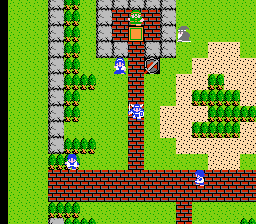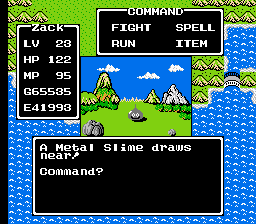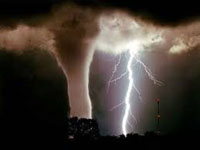RPGs aren't exactly a new thing - their existence dates back to before the video game industry existed. One of the first well-known RPGs was Dungeons and Dragons, a tabletop RPG meant to be played with a small group of friends. Electronic RPGs date back to the early 70s, being designed by college students on the earliest computers available, although these games typically never left the college they were programmed in. On the earliest home computers that had the capacity to play games, you would find things like Akalabeth and Wizardry, which would both go on to spawn long-running series. These games, however, were very complex for their time, and also very difficult both to play and to learn. In 1986, however, Dragon Quest was released in Japan for the Nintendo Famicom, and it became very famous. It was designed to be simple enough to be played with a controller, yet still have some of the complexities of the aforementioned computer RPGs, and it succeeded in that regard. It was a massive hit in the Japanese market, selling over 1.5 million copies total.
However, it took three years to be released in the United States, and their tastes were very different from those of the Japanese public. They preferred the fast-paced action of Zelda over the tactical gameplay of Dragon Warrior, and a better RPG for their tastes would come just a year later in the form of Final Fantasy, which was a massive success in the US market. Nintendo had produced half a million cartridges of the game, assuming that it would sell just as well in the US as it had in Japan, but it was not to be, and they eventually resorted to giving free copies of the game away with Nintendo Power magazines. Does it hold up at all to its Japanese success, or was the American market right to reject it?
First of all, the graphics...were not all that great. There weren't any other major console RPGs to set standards at that time, but the graphics of the original Dragon Quest were primitive even by 1986 standards. When the game came over to the US three years later, though, they saw fit to upgrade the graphics a bit, which was a welcome change. It has its own style, which looks very distinctive, and the graphics are generally passable for the overworld, but where the graphics really shine is in the monster designs. Every monster design you'll see is very original and very well-drawn, although they don't have any animation, but a lot of them are used multiple times for different monsters with minor details changed or minor things added, which is very disappointing.
The music is fairly standard for a 1986 game, and doesn't fully utilize the sound capabilities of the NES. The simplistic melodies get very grating on your nerves after a while, and it doesn't help that you have to listen to the same few songs throughout the entire game. There's one song for towns, one song for the main castle where you can save your game, one song for dungeons, one song for fights...there's very little variety here. The sound effects don't fare much better, being as simple as they can be for an NES game.
The gameplay is fairly standard RPG fare - explore a large world, kill monsters, gain gold and experience, and rescue the princess. It starts off with the King giving you a long speech about you being the descendant of Erdrick before giving you two missions:rescue the princess and defeat the Dragonlord. It's not very deep, even for the time, but it works.
This first room, though, showcases some of the reasons why this game hasn't aged well. The command window, which you have to use for everything other than walking, feels clunky and unresponsive, and commands are required for the most mundane things that are done for you in most other RPGs. I understand opening the menu to talk to people or take items, but why do I have to open the menu to use stairs? Would it really have killed them to make the stairs activate when you walk on them?
Once you get out of the castle, you're introduced to the most prominent part of the game, and the part you'll spend most of your time doing: grinding. At least 75% of your time will be spent killing the same enemies over and over again until you gain enough experience and gold to equip yourself better and proceed onwards. It doesn't help that you begin weaker than a vegetable, which forces you to grind at least three or four levels before you can even think about safely venturing beyond the area you start the game in. To put things into perspective, you need to gain 110 EXP to get to level 4, which is the minimum level to safely venture out from the starting area, and the enemies around the starting area give 1 or 2 EXP each. That's a lot of fighting just to start the game properly, and the grinding never eases up.
The game is surprisingly open-ended, and most of your objectives can be completed independently of each other, although they all need to be completed. If you had the luck of a professional gambler, you could wander down to a swampy area in the far southwest and grab an important item necessary to proceed in the plot much later at LV 1, although you'll have to commit suicide to get back out. The game kinda just throws you in and expects you to learn how to proceed from the dialogue, which is a welcome change of pace from the average RPG, and it's one of the things that really stands out about this game.
To hammer in the point about the grinding in this game, consider what I've said so far. Now, consider the fact that the lowest level where you have a decent chance of besting the Dragonlord is LV 20, where you'll have to run from every enemy and pray that you get away from them. You have to gain a total of 26,000 EXP to get to LV 20, the most you'll be gaining from battle at the best grinding spot in the game is 50 EXP per enemy, and the most EXP you'll ever get from one battle is 115 EXP. No matter how you slice it, this game will require an incredible amount of grinding. I really can't push this point hard enough - the grinding is easily the worst part about this game, by far. It's hilarious, too, because it's been shown that someone with perfect luck can beat the game at level SEVEN.
Overall, this game is an important part of the history of RPGs, but it has not aged well at all. I've heard numerous people say that the original Final Fantasy is dated...If that's the case, then trying to play this game today is like unearthing a 10,000 year old bottle of milk from an Egyptian tomb and drinking it. Its presentation is not particularly impressive, the storyline is very simple, and the gameplay revolves entirely around exploring the fairly small world and grinding so you can explore more.
Overall Rating: 4.5 stupidly long grinding sessions out of 10 |
 NovemberJoy is Offline
| ID: 1320199 | 1218 Words
NovemberJoy is Offline
| ID: 1320199 | 1218 Words
 NovemberJoy is Offline
NovemberJoy is Offline
 NovemberJoy is Offline
| ID: 1320342 | 80 Words
NovemberJoy is Offline
| ID: 1320342 | 80 Words
 NovemberJoy is Offline
NovemberJoy is Offline
 Ghostbear1111 is Offline
| ID: 1331647 | 260 Words
Ghostbear1111 is Offline
| ID: 1331647 | 260 Words
 Ghostbear1111 is Offline
Ghostbear1111 is Offline


 User Notice
User Notice 










